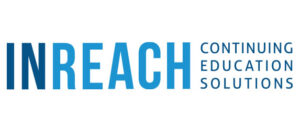Essential Elements To Getting Certified
In today's rapidly evolving professional landscape, the importance of acquiring new skills and staying updated within one's field cannot be overstated. As industries continue to transform and adapt to technological advancements, the need for recognized certifications becomes more critical. Certification methods play a pivotal role in this process, providing a structured framework to assess and validate an individual's proficiency. In this article, we will delve into various certification methods, exploring their nuances and shedding light on the significance they hold in professional development.
Understanding Certification Methods: An Overview
Certification methods are a set of structured assessments or activities that individuals must complete to demonstrate their knowledge and skills in a specific area. These methods are designed to ensure a standardized evaluation process, allowing employers and stakeholders to gauge the expertise of a certified professional accurately.
1. Attendance
One of the fundamental certification methods is attendance. In many courses or workshops, simply being present is considered a prerequisite for certification. This ensures that participants have been exposed to the essential information, creating a baseline for further assessments.
While attendance may seem straightforward, it serves as the foundation upon which other methods can build. It provides participants with an initial exposure to the subject matter, laying the groundwork for more in-depth assessments.
2. Participation Codes
Active engagement is a key component of the learning process. Participation codes are a certification method that measures an individual's involvement in discussions, activities, or group projects during a course or training program. This method goes beyond mere attendance, evaluating the depth of understanding and application of knowledge.
Participants are often required to contribute meaningfully to discussions, share insights, or collaborate with peers to earn participation codes. This ensures that certified individuals not only grasp the theoretical aspects but also possess the practical skills necessary for real-world scenarios.
3. Pre-Test And Post-Test
Pre-tests and post-tests are common certification methods used to assess the knowledge gained before and after a training program, respectively. The pre-test serves as a diagnostic tool, gauging the participant's baseline knowledge, while the post-test evaluates the acquired understanding. Mandatory completion of both tests ensures that individuals have not only attended the program but have also comprehended and retained the information. This method is particularly effective in measuring the effectiveness of the training and the participant's growth throughout the course.
4. Retention Test
A retention test assesses a participant's ability to retain information over an extended period. This certification method is crucial for validating long-term knowledge retention and application. It helps ensure that certified professionals can recall and apply the acquired knowledge well beyond the immediate learning period.
Retention tests often come into play weeks or months after the completion of the training program. They serve as a litmus test for the effectiveness of the learning material and the durability of the participant's understanding.
5. Scheduled Evaluations
Scheduled evaluations are periodic assessments conducted throughout a training program. These assessments may include quizzes, assignments, or practical tests designed to measure ongoing progress. By incorporating scheduled evaluations, certification programs can identify areas of improvement, allowing participants to address weaknesses before the final certification.
Mandatory Vs. Optional Certification Methods: Navigating The Choices
Certification methods can be categorized as either mandatory or optional. Mandatory methods must be completed by participants before earning certification, ensuring a comprehensive evaluation of their skills and knowledge. On the other hand, optional methods provide flexibility, allowing participants to choose which assessments they wish to undertake.
Mandatory certification methods are critical for maintaining the integrity and credibility of the certification process. They establish a minimum standard that all certified individuals must meet, ensuring a consistent level of expertise across the board. Optional methods, while providing flexibility, may result in a less comprehensive evaluation and are often used for supplementary or specialized certifications.
Conclusion: Empowering Professional Growth
In conclusion, certification methods serve as a structured pathway to professional development and validation. By combining attendance, participation codes, pre-test and post-test assessments, retention tests, and scheduled evaluations, certification programs create a robust framework for evaluating an individual's skills and knowledge.
The distinction between mandatory and optional certification methods adds a layer of flexibility to accommodate diverse learning preferences. While mandatory methods set a baseline standard for certification, optional methods allow individuals to tailor their certification journey to their specific needs.
As professionals continue to seek ways to stay competitive in their respective fields, certification methods offer a tangible and recognized way to showcase expertise. Whether pursuing a mandatory or optional certification path, individuals can be confident that the thorough evaluation provided by these methods enhances their credibility and opens doors to new opportunities in their careers.


